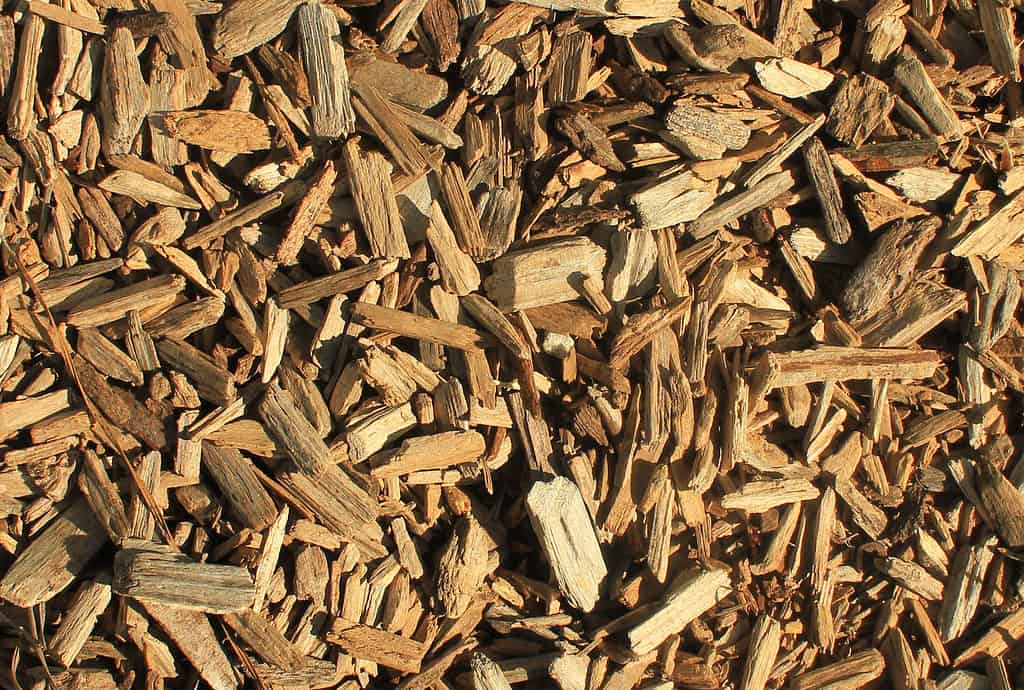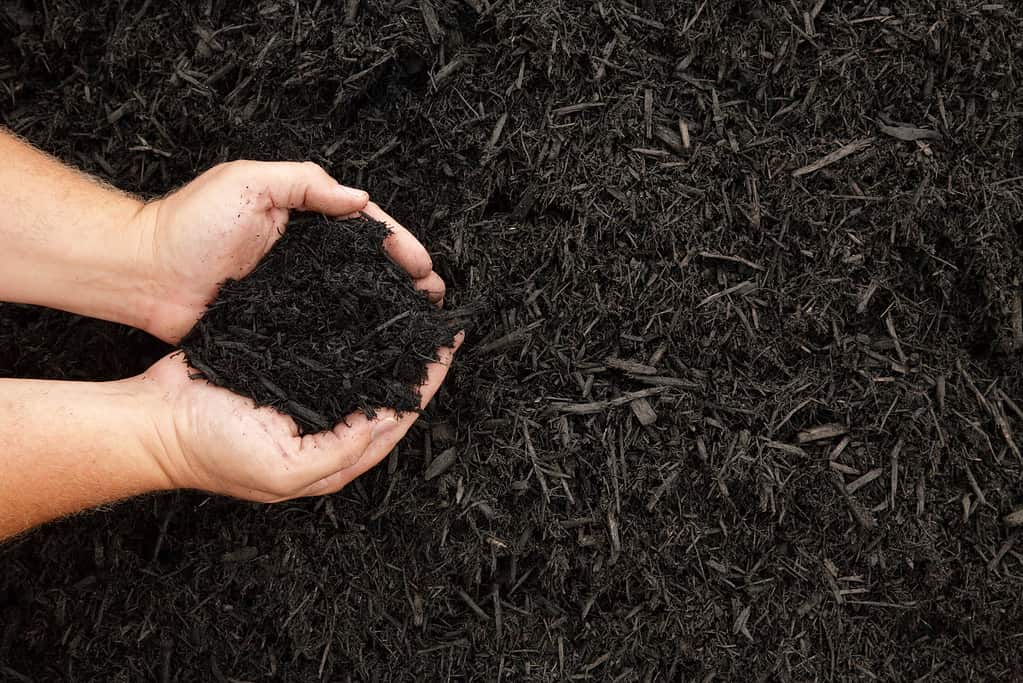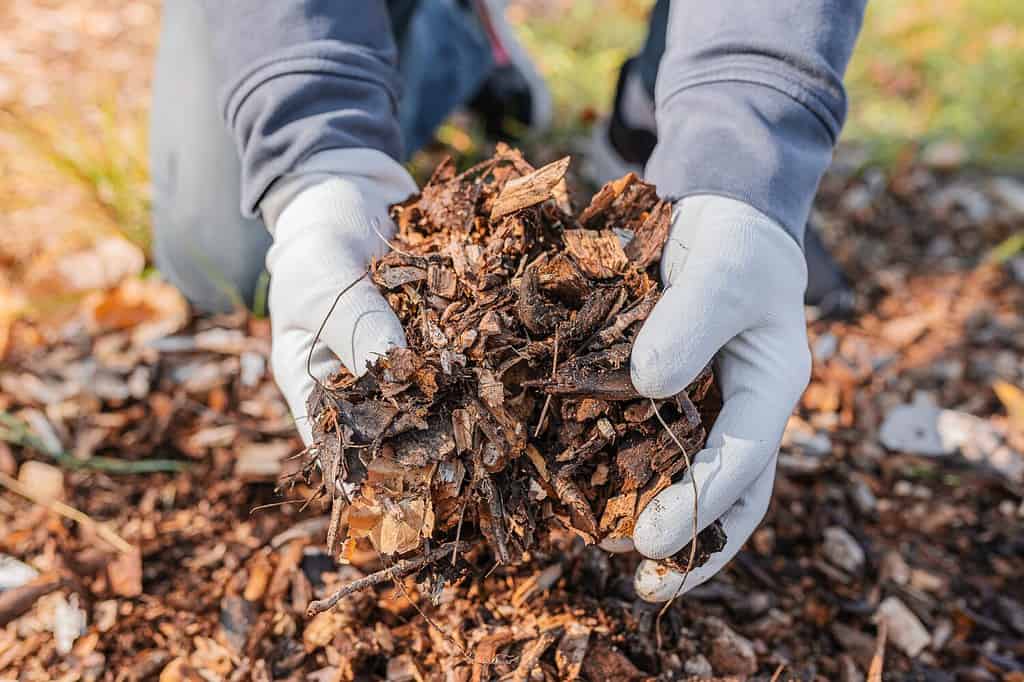As temperatures begin to warm up, many people begin to brainstorm ways to revamp their gardens and yards. If you’ve been thinking about using wood chips or mulch on your property, you might be wondering which option is right for you. Let’s discuss five key differences between these two options that will help you determine which one will be better suited for your yard.
Wood Chips and Mulch: A Brief Introduction

While both wood chips and mulch offer similar benefits, there are a few key differences to be aware of.
©Yinan Chen / Public Domain – License
The term “mulch,” encompasses a wide variety of materials. Because of this, it can be very different from wood chips in some cases. Typically, wood chips are flaked pieces of wood from the trunk, branches, and bark of trees. On the other hand, mulch can refer to a variety of materials such as bark, grasses, straw, newspaper, hay, leaves, and other pieces of wood. While some gardeners prefer to use one over the other, many people elect to combine both wood chips and mulch in their yards to serve a variety of purposes. Let’s explore some differences between the two now.
1. Size Differences
The most prominent difference between mulch and wood chips is the sizes of the pieces. Wood chips are typically cut into much larger flakes and they’re less uniform in appearance. On the other hand, mulch is comprised of smaller, more shredded pieces of wood and other materials. The presence of inclusions such as cardboard, newspaper, and grass clippings gives mulch a more finely chopped appearance. In addition, these inclusions also help give mulch a softer texture.
2. Practical Differences

The type of mulch you purchase will play a role in its relative durability.
©iStock.com/witmerphotography
While some consumers state that wood chips offer more benefits than mulch, others feel the opposite. The truth is that both wood chips and mulch serve similar purposes. Both options help improve the quality of the soil, stamp out weeds, and retain moisture. In addition, the presence of wood chips and mulch can help fend off garden pests. Finally, both of these options serve as a protective layer between the soil and outside interference.
Despite these similarities, some people believe that mulch is better at retaining soil quality and improving the health of gardens. Most people who choose this route are primarily after improved plant growth over aesthetics. However, wood chips are typically much more durable, and they will almost always outlast mulch in any garden or yard.
3. Aesthetic Differences

While rubber mulch is more durable than wood mulch, it lacks beneficial nutrients.
©OzCameraman/Shutterstock.com
While many people use wood chips and mulch for practical purposes, others use them for pure aesthetics. Wood chips are widely thought of as attractive in terms of appearance, and they are typically used as pathways, playground floors, or garden beds. Mulch on the other hand serves more practical purposes than aesthetic ones. However, mulch is available in a variety of colors and can range from black and brown to red tones. Some homeowners may find that one color over another fits the aesthetic of their yard more closely. In these cases, mulch may be better suited than wood chips, as chips are often less colorful.
4. Content Differences
The materials used in wood chips and mulch can be vastly different. Because of this, buyers should inspect the packaging to check the contents of each bag before committing to a purchase. Wood chips often consist of wood and wood materials only. Mulch often contains wood materials, but also includes cardboard, grasses, and newspaper bits. Because mulch can vary so greatly in what’s included, it’s important to research the contents of the mulch you’re purchasing.
5. Price Differences

Purchasing wood chips and mulch can be very affordable if you know where to look.
©larisa Stefanjuk/Shutterstock.com
For many, price is an incredibly important factor in determining whether wood chips or wood mulch will be a better fit. In fact, some people go as far as to say that price is the most influential factor of all in the decision process. Individuals looking for a more economical option will be happy to learn that both wood chips and mulch are free in certain cases. Check local tree-cutting businesses to see if they have either available. However, some individuals will have to pay to purchase their mulch and woodchips.
On average, mulch will cost somewhere between $40 and $100 per cubic yard. Gardener’s Supply Company offers a useful tool to help you determine how much it will cost to mulch your yard. Wood chips cost between $15 and $55 per cubic yard. Different types of mulch and wood chips will vary in price, so it’s important to shop around before settling on one seller.
Final Thoughts
While both wood chips and mulch have quite a few similar characteristics, many homeowners report a preference for one over the other. The contents of your garden, your location, your aesthetic preferences, and your budget will all play a role in determining which one is better suited for your yard. Luckily, this decision is very low impact. Regardless of which option you choose, you can always go back and buy the other. You may even want to purchase mulch and wood chips to serve different purposes around your property!
The photo featured at the top of this post is © larisa Stefanjuk/Shutterstock.com
Thank you for reading! Have some feedback for us? Contact the AZ Animals editorial team.






